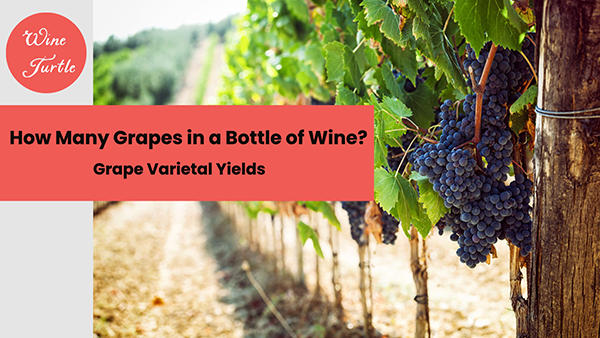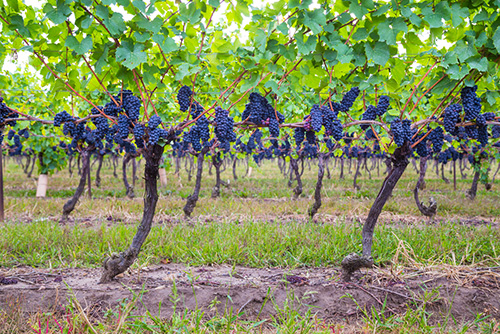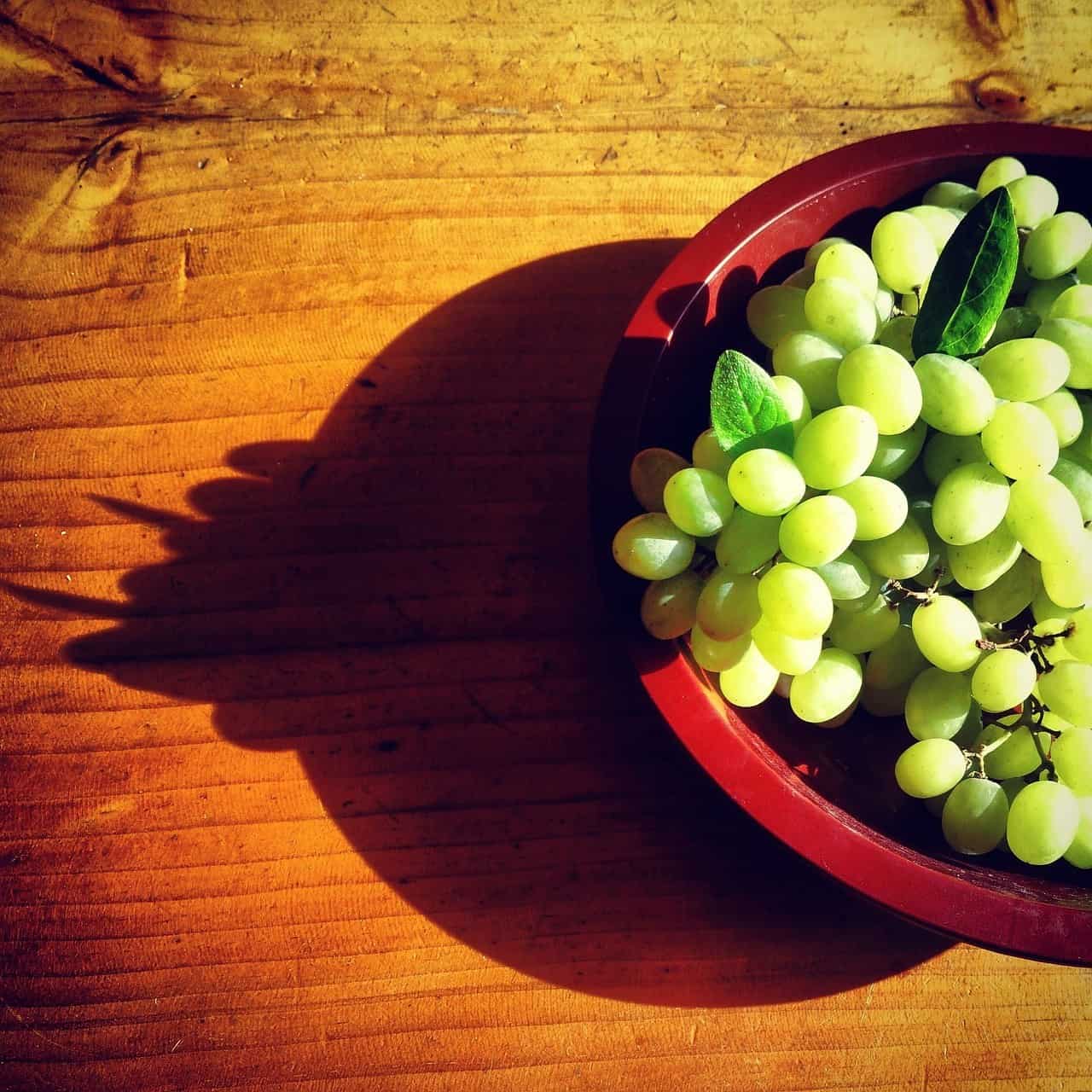How Many Grapes in a Bottle of Wine? [Grape Varietal Yields]

Wine is a complex beverage that undergoes a lengthy process to create. While the exact number of grapes needed to make a bottle of wine can vary depending on several factors, we can give you a rough estimate of what it takes to create your favorite glass of vino.
The quick answer:
Depending on the grape variety it takes somewhere between 300-600 grapes to make a bottle of wine.
So 300 grapes for one bottle of wine is the best grapes to wine ratio you'll find.
The Science Behind Winemaking
Winemaking involves several key steps: harvesting the grapes, pressing them, fermenting the juice, aging the wine, and bottling it.
The number of grapes needed to make a bottle of wine varies depending on the winemaking process, which can vary from one winemaker to another.
Grape Variety and Wine Production
The grape variety used to produce wine is a significant factor that influences the number of grapes needed to make a bottle of wine.
For instance, a single bottle of wine made from the Pinot Noir grape, which has a low yield per vine, requires around 600 grapes, while a bottle of wine made from a high-yielding grape like Grenache requires only around 300 grapes.
The Highest Yielding Grape Varietals
Wine grape varieties can vary significantly in yield, depending on factors such as growing conditions, winemaking practices, and trellising techniques.
Here are the five highest yielding wine grape varieties and their average yields in order:
- Carignan - Carignan is a red grape variety that is widely grown in southern France and Spain. It is known for its high yields, with an average yield of 8 to 10 tons per acre.
- Grenache - Grenache is a red grape variety that is widely grown in France and Spain. It is known for its high yields, with an average yield of 6 to 8 tons per acre.
- Syrah - Syrah is a red grape variety that is widely grown in France, Australia, and California. It is known for its high yields, with an average yield of 4 to 6 tons per acre.
- Merlot - Merlot is a red grape variety that is widely grown in France, Italy, and California. It is known for its high yields, with an average yield of 4 to 6 tons per acre.
- Chardonnay - Chardonnay is a white grape variety that is widely grown in France, California, and Australia. It is known for its high yields, with an average yield of 3 to 5 tons per acre.
It is worth noting that while high-yielding grape varieties can be desirable from a production standpoint, they may not always produce the highest quality wine.
Winemakers must balance yield with grape quality to ensure that they produce high-quality wines that meet their standards.

The Lowest Yielding Grape Varietals
The lowest yielding wine grape varieties are often associated with higher quality and more concentrated flavors, due to the limited yield per vine.
Here are the five lowest yielding wine grape varieties and their average yields in order:
- Pinot Noir - Pinot Noir is a red grape variety that is widely grown in Burgundy, France, and Oregon. It is known for its low yields, with an average yield of 2 to 3 tons per acre.
- Cabernet Franc - Cabernet Franc is a red grape variety that is widely grown in the Loire Valley in France and in New York. It is known for its low yields, with an average yield of 2 to 4 tons per acre.
- Nebbiolo - Nebbiolo is a red grape variety that is widely grown in Piedmont, Italy. It is known for its low yields, with an average yield of 2 to 4 tons per acre. Barolo is an example of a wine made with this grape.
- Sangiovese - Sangiovese is a red grape variety that is widely grown in Tuscany, Italy, and in California. It is known for its low yields, with an average yield of 2 to 5 tons per acre.
- Riesling - Riesling is a white grape variety that is widely grown in Germany, Alsace, and Washington State. It is known for its low yields, with an average yield of 2 to 6 tons per acre.
While these grape varieties have lower yields, the resulting wine can be of exceptional quality and flavor, due to the concentrated fruit and complex aromas and flavors.
Winemakers must carefully manage these grape varieties to ensure they produce high-quality wines that meet their standards.
Another factor to consider is the wine production process. Different pressing methods will result in different quantities of juice extracted from the grapes.
The more juice you can extract from the grapes, the fewer grapes you will need to make a bottle of wine. Therefore, winemakers can adjust the amount of pressure applied to the grapes during the pressing process, depending on the type of wine they are making and the quality of the grapes.
Take ice wine as an extreme example.
Ice wine is a type of dessert wine made from frozen grapes that are harvested and pressed while still frozen. As the frozen grapes are pressed, the water in them remains frozen, and only the concentrated grape juice is extracted, resulting in a very sweet and concentrated wine.
On average, it takes about 3-4 times as many grapes to make a bottle of ice wine as it does for regular wine.
Climate and Growing Conditions
Climate and growing conditions can also affect the number of grapes needed to make a bottle of wine. The quantity of grapes produced per vine can vary significantly depending on the weather conditions during the growing season.
If the season was dry or too cold, the grapes may not produce enough juice, resulting in more grapes needed to make a bottle of wine. On the other hand, in ideal conditions, one vine can produce enough grapes to make two bottles of wine.
Yield per Hectare
Winemakers often measure grape production in terms of yield per hectare (2.471 acres), which is the amount of grapes produced by one hectare of vines.
This measurement takes into account the grape variety, growing conditions, and winemaking practices.
In general, it takes around 600-800 grapes per bottle of wine. This estimate is based on the average grape yield and the amount of juice that is typically extracted from the grapes during the pressing process.

How Winemakers Can Improve Grape Yields
Winemakers are always looking for ways to improve the yield of their vineyards, as a higher yield can mean more wine production and a better bottom line.
Here are some of the ways that winemakers are trying to improve the yield of their vines:
Conclusion
While there is no exact number of grapes required to make a bottle of wine, the grape variety, growing conditions, and winemaking process all play a crucial role.
Winemakers strive to produce the highest quality wine, and that requires attention to detail at every stage of the process.
Understanding the science behind winemaking and how each variable can impact the grape yield can help wine enthusiasts appreciate the complexity and artistry of this ancient beverage.
